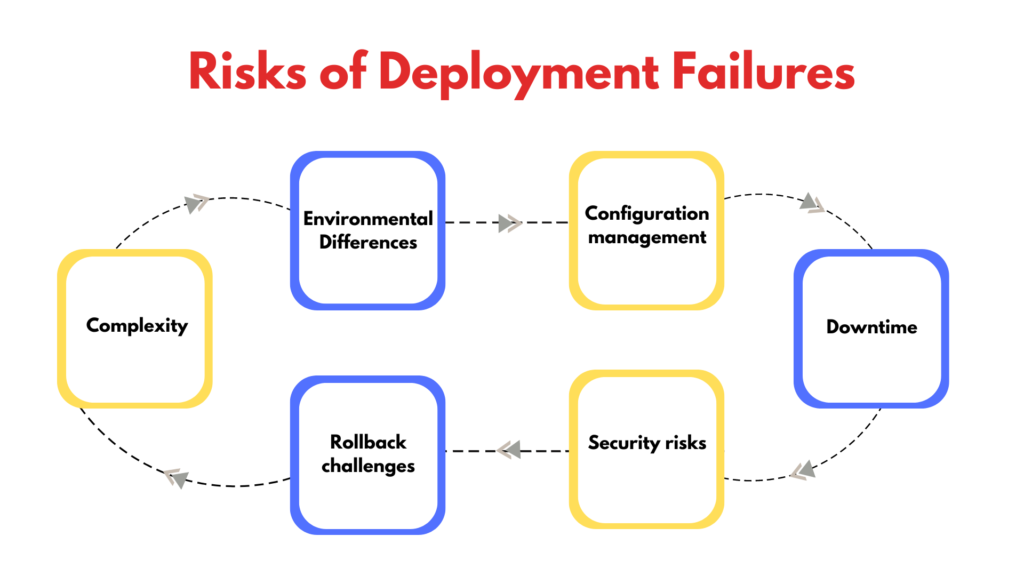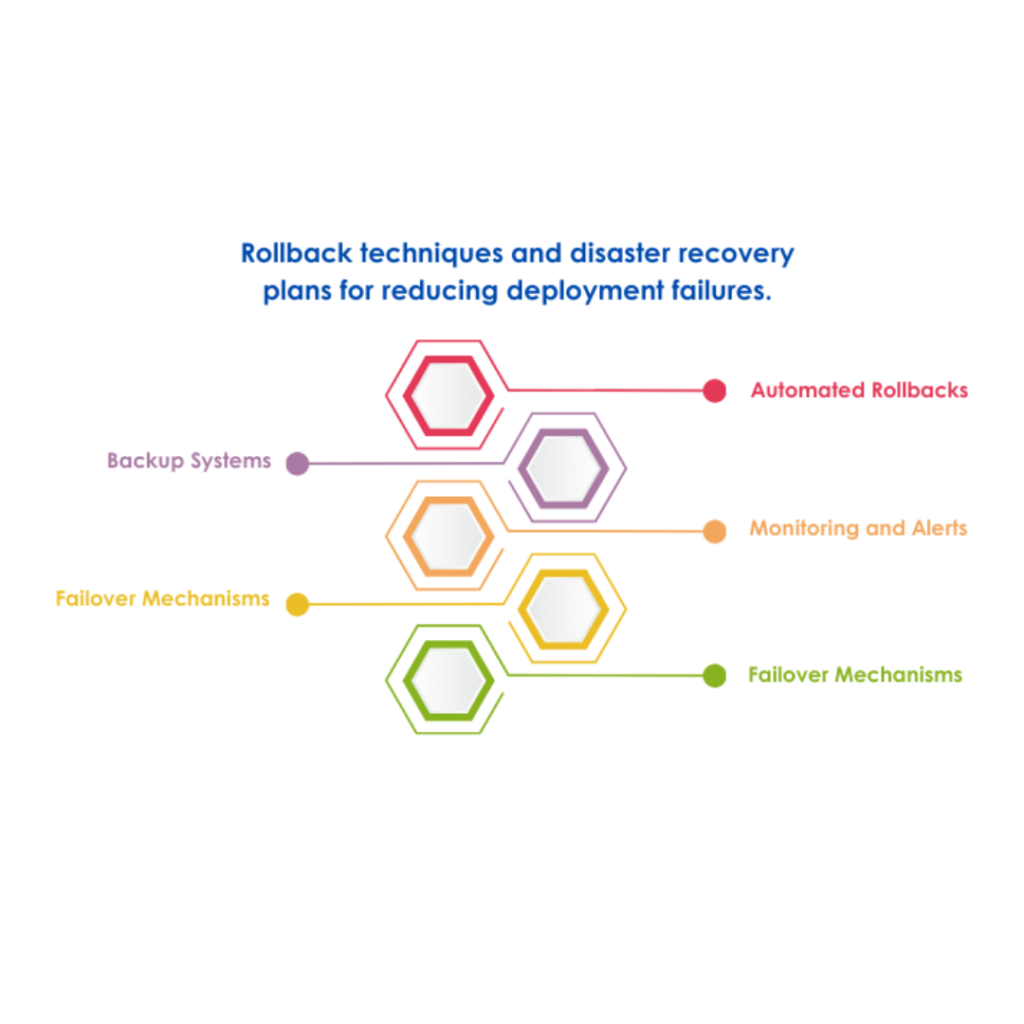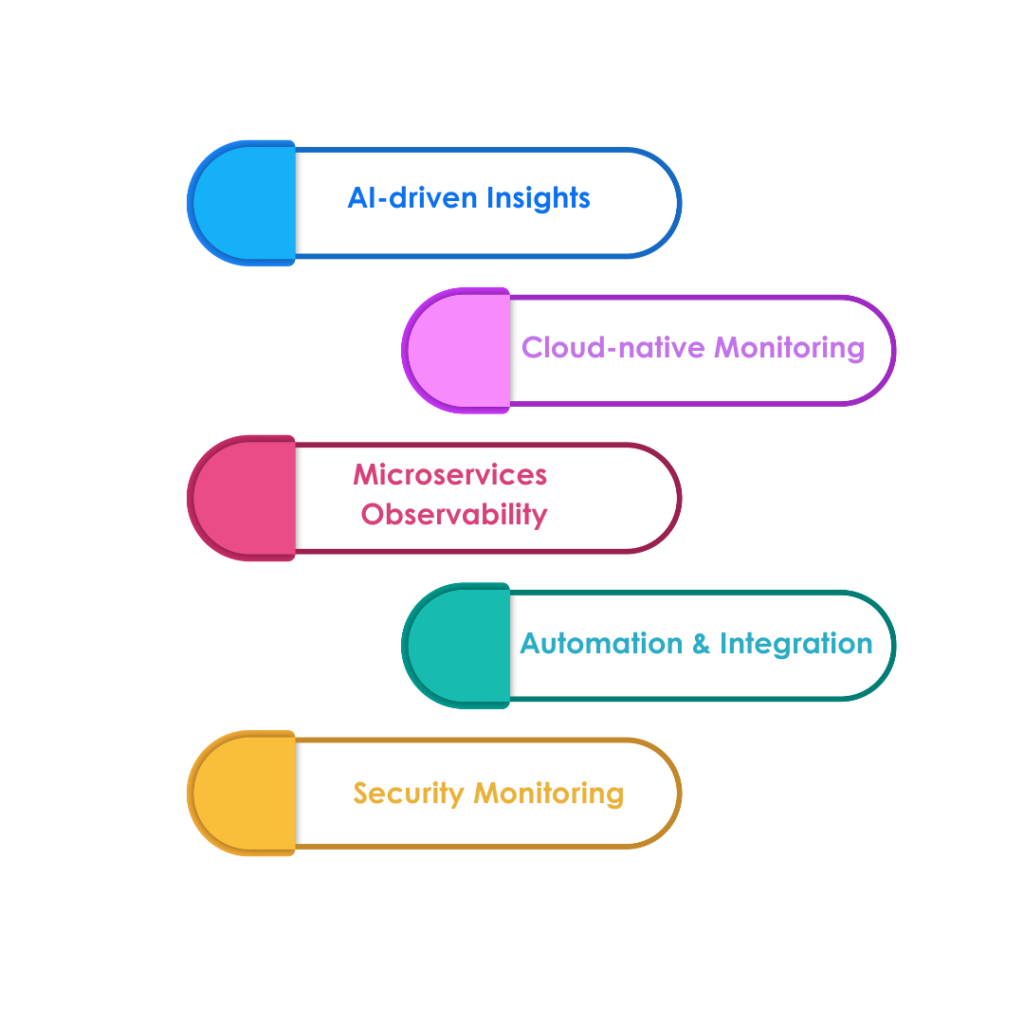DevOps is a software development and delivery culture shift that promotes collaboration, communication, and automation between development and operations teams. It seeks to bridge the gap between these typically isolated teams by encouraging a culture of shared accountability and continual improvement.
Deployment Errors are avoided when DevOps and analytics are integrated with AI and ML. This also improves the general effectiveness and dependability of company processes. Continuous innovation and improvement are ensured by this proactive strategy.
The significance of preventing downtime lies in the fact that it costs money and negatively impacts customer happiness, staff productivity, and finances.
Advanced analytics and artificial intelligence (AI) are utilized to anticipate and track possible problems, allowing for proactive management.
Integration’s advantages include improved IT infrastructure management for organizations, which lessens the probability and effect of outages.
Overview of DevOps and how it helps enhance deployment procedures
DevOps plays a crucial role in improving deployment processes by introducing practices such as continuous integration, continuous delivery, and continuous deployment (CI/CD).
The collection of secure procedures known as “DevOps technology” places a strong emphasis on software development and operations teams working together, automating tasks, and pursuing continuous improvement. The ideas behind it are intended to
- Destroy silos
- Simplify processes
- Boost software delivery’s quality and velocity.
By streamlining software deployment and lowering such errors, continuous DevOps monitoring can assist you. As we explore below, let’s comprehend this:
Collaboration
Throughout the whole software development lifecycle, software developers and operations teams collaborate thanks to the business process integration of DevOps. All parties are guaranteed to have the same objectives and workflows because of this close coordination. This reduces errors and miscommunication.
Automation
The foundation of DevOps monitoring is automation. It assists in getting rid of tedious chores and lowers the possibility of human error. Software can be provided quickly and consistently thanks to automated testing, deployment, and monitoring.
Continuous Integration and Delivery (CI/CD)
CI/CD procedures include automatically deploying and integrating code changes on a regular basis. This method guarantees that code is always in a deployable state and enables faster issue discovery and resolution.
Infrastructure as Code
Using code instead of manual procedures, IaC entails maintaining and provisioning computer infrastructure. Infrastructure configurations may be tested and versioned much like application code, which makes deployments more consistent and dependable.
Microservices Architecture
Microservices allow applications to be divided into more manageable, independent services that can be created and implemented independently. This architecture lessens the effect of changes or failures in any one component and provides for greater flexibility.
Microservices allow applications to be divided into more manageable, independent services that can be created and implemented independently. This architecture lessens the effect of changes or failures in any one component and provides for greater flexibility.
challenges of software deployments and the risks of deployment failures

Complexity
Modern software systems are highly complex, with multiple components, dependencies, and integrations, making deployments error-prone.
Environmental differences
Inconsistencies between development, testing, and production environments can lead to unexpected issues.
Configuration management
Tracking and managing configuration changes across environments is crucial but challenging.
Downtime
Deployment failures can result in service disruptions, leading to revenue loss and customer dissatisfaction.
Security risks
Faulty deployments can introduce security vulnerabilities, exposing sensitive data and systems.
Rollback challenges
Reverting to a previous stable version can be difficult, prolonging downtime. Addressing these challenges through DevOps practices and analytics is essential to mitigate the risks of deployment failures and ensure smooth, reliable software releases.
Proactive issue detection and alerting mechanisms
Proactive issue detection and alerting mechanisms involve continuous monitoring of systems, using predictive analytics to identify potential problems early, and sending real-time alerts to prevent downtime and ensure timely resolution.
Explanation
- Continuous monitoring of systems.
- Predictive analytics for early issue identification.
- Real-time alerts for timely intervention.
- Prevents downtime and enhances system reliability.
Leveraging automated testing and monitoring tools
Leveraging automated testing and monitoring tools enhances software quality by ensuring consistent, fast, and accurate test execution. Key benefits include:
- Early bug detection
- Continuous integration support
- Reduced human error
- Increased test coverage
- Faster release cycles
- Improved application performance monitoring
Collecting and analyzing application and infrastructure metrics
Collecting and analyzing application and infrastructure metrics involves monitoring performance, identifying bottlenecks, ensuring reliability, optimizing resource usage, enhancing security, and enabling proactive maintenance, ultimately leading to improved user experience, cost efficiency, and system robustness.
Key points
1.Monitoring Performance: Track key metrics to ensure applications and infrastructure operate efficiently.
2.Identifying Bottlenecks: Detect performance issues to address potential slowdowns or failures.
3. Ensuring Reliability: Maintain consistent service availability and functionality.
4. Optimizing Resource Usage: Efficiently utilize resources to reduce costs and improve performance.
5. Enhancing Security: Monitor for security threats and vulnerabilities.
6. Proactive Maintenance: Prevent issues before they impact users through timely interventions.
7. Improved User Experience: Ensure smooth and reliable user interactions with the application.
8. Cost Efficiency: Minimize unnecessary expenses by optimizing infrastructure usage.
9. System Robustness: Strengthen the system to handle varying loads and potential issues.
Rollback strategies and disaster recovery plans in Reducing Deployment Failures.

Rollback strategies and disaster recovery plans are essential in reducing deployment failures by ensuring quick recovery from issues, maintaining system integrity, and minimizing downtime. Key points include:
Automated Rollbacks: Quickly revert to the last stable version.
Backup Systems: Regularly back up data to prevent loss.
Monitoring and Alerts: Detect issues early for prompt action.
Failover Mechanisms: Switch to backup systems seamlessly.
Documentation and Training: Ensure staff can efficiently execute recovery procedures.
Best practices and recommendations for reducing deployment failures and minimizing downtime.
To minimize deployment failures and downtime, follow these best practices:
1. Thorough Testing: Conduct comprehensive testing across various environments to identify and rectify issues before deployment.
2. Automated Deployment: Utilize automated deployment tools to streamline the process and reduce human errors.
3. Rollback Plans: Develop rollback procedures to quickly revert to a stable state in case of failures.
4. Incremental Updates: Implement gradual deployments instead of big-bang releases to mitigate risks.
5. Monitoring & Alerts: Set up robust monitoring systems to detect anomalies and trigger alerts for timely intervention.
6. Continuous Improvement: Regularly review deployment processes to incorporate lessons learned and enhance efficiency.
Overcoming DevOps monitoring challenges
There will undoubtedly be difficulties with implementing analytics, adopting DevOps monitoring procedures, or doing both. Thus, for a successful implementation, it is imperative to comprehend and overcome these obstacles.
This time, we’ll examine some typical problems and solutions.
Resistance to Culture
Teams might be used to conventionally divided workflows in this situation. It is possible to encounter resistance when using a collaborative approach. Addressing this must be done by
- Promoting open discussion
- Encouragement of common objectives
- The advantages of teamwork are highlighted
Complexity of the Toolchain
Teams may become overwhelmed by the intricacy of toolchains in DevOps monitoring and analytics settings. Errors and inefficiencies result from this. This difficulty can be lessened by streamlining toolchains whenever it is practical and by offering sufficient assistance and training.
Organizations should also regularly assess their toolchains to make sure they are in line with their objectives and procedures.
Insufficient Experience
Another issue is the lack of knowledge regarding DevOps monitoring and analytics technology. Putting money into training initiatives, promoting team knowledge exchanges, and making use of outside resources like partnerships or consultants will all contribute to closing the skills gap and gradually developing internal expertise.
Issues
Any technology installation must prioritize security, but this is especially true for DevOps monitoring and analytics since these processes may contain sensitive data. Addressing security issues and fostering stakeholder trust may be accomplished through putting strong security measures into place, performing frequent audits, and making sure industry standards are being followed.
Management of Change
Workflows, procedures, and organizational culture often need to be significantly altered in order to implement DevOps performance analytics projects. Stakeholder involvement, gradual implementation, and clear communication are all examples of effective change management tactics that are critical to minimize disruption and winning over all stakeholders.
Read Also: How Can Replatforming in Cloud Migration Improve Your Digital Transformation?
Future trends in DevOps monitoring and analytics

Some DevOps trends are starting to emerge as the field of software development and deployment progresses, and they have the potential to decrease deployment errors by increasing productivity.
1. AI-driven Insights: Utilization of artificial intelligence for predictive analytics and anomaly detection.
2. Cloud-native Monitoring: Enhanced focus on monitoring and analyzing cloud-native environments for scalability and agility.
3. Microservices Observability: Deeper visibility into microservices architectures to diagnose and resolve issues efficiently.
4. Automation & Integration: Increased automation and integration with CI/CD pipelines for seamless monitoring throughout the software development lifecycle.
5. Security Monitoring: Integration of security monitoring into DevOps pipelines for proactive threat detection and mitigation.
Conclusion
So far, it has been evident that combining analytics with DevOps technologies is not only a necessary technological advancement but also a strategic requirement for all contemporary enterprises.
These approaches guarantee more seamless deployments, reduce expensive downtime, and maintain both financial stability and customer trust by anticipating and fixing possible problems before they become problems.

